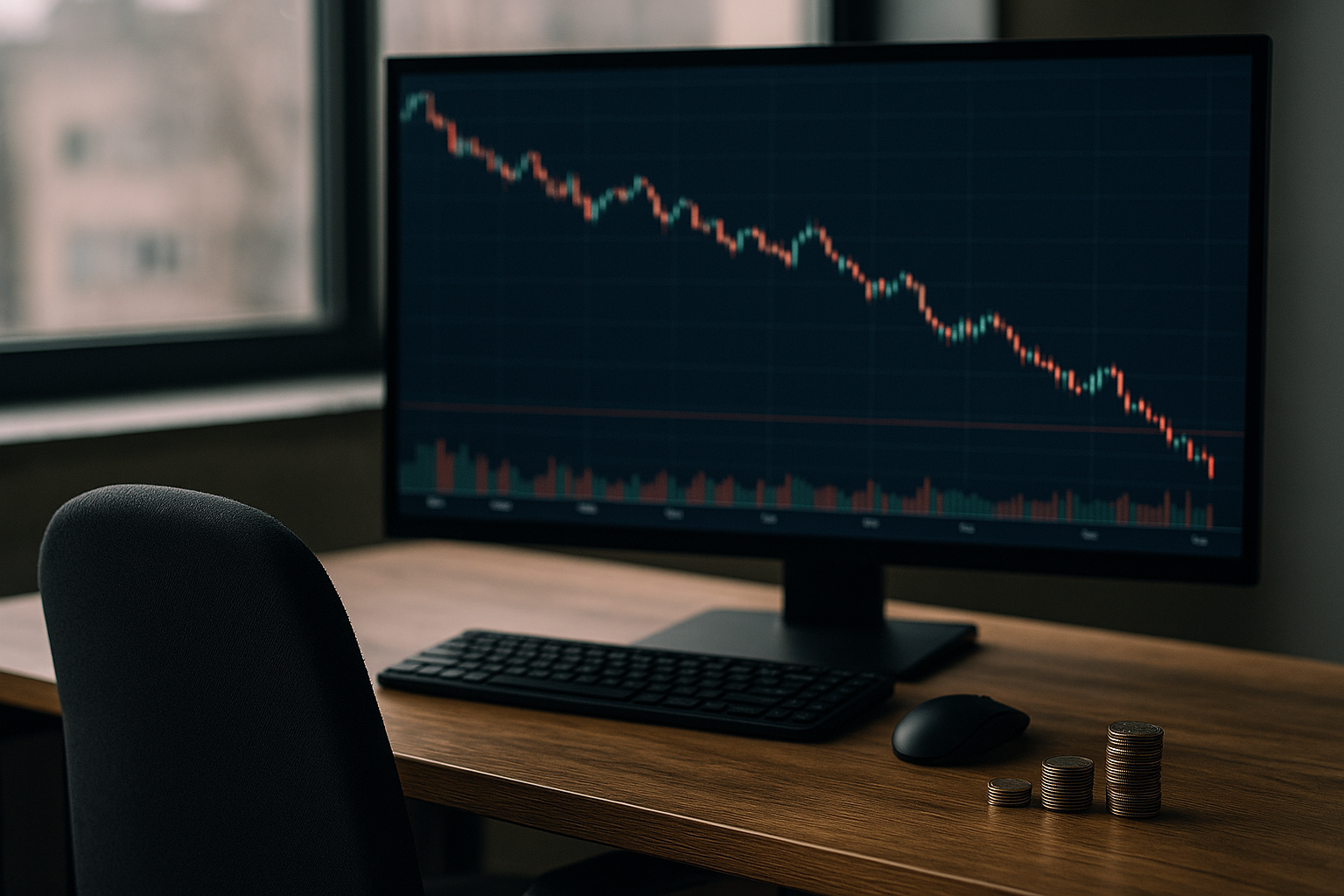For more than two years, one defining feature of the U.S. equity landscape has been the unwavering resilience of retail investors. From meme-stock surges to AI-powered tech rallies, dip-buying by individual traders has repeatedly acted as a backstop for market pullbacks. But new data suggests that dynamic may be shifting — and investors are watching closely.
According to fresh figures from Vanda Research and client flow data from Bank of America, retail investors turned net sellers of U.S. equities for the first time since late September 2025. The insight, reported by Reuters, points to a cooling appetite for risk at a moment when concerns about stretched valuations, declining breadth, and an AI-driven bubble are intensifying across Wall Street.
If the retail bid disappears — even temporarily — the character of market dips could look very different heading into year-end.
Retail Sellers Emerge as Confidence Softens
Vanda Research, which tracks retail trading flows across major U.S. brokerages, noted a significant shift: instead of aggressively buying market pullbacks, many individual investors are beginning to reduce exposure. This reversal follows months of heavy concentration in the largest AI-linked names, where valuations have expanded to levels that some analysts see as difficult to justify.
Bank of America’s latest Global Research Fund Manager Survey similarly shows that retail inflows have slowed markedly, with U.S. households moving from net buyers to net sellers across equities, ETFs, and single stocks. The retreat is modest but symbolically important — a sign that retail investors may be losing conviction after an extended period of enthusiasm.
Market strategists told Bloomberg earlier this week that the retail slowdown reflects a combination of valuation concerns, reduced liquidity, and uncertainty around the durability of the AI trade. Even with corporate earnings holding up better than expected, the market’s narrow leadership — dominated by a handful of mega-cap tech stocks — is raising questions about resilience if volatility returns.
Why This Matters for Investors
The End of an Era for “Retail as the Shock Absorber”?
Since 2020, retail flows have frequently acted as a stabilizing force during selloffs. Retail traders were consistent buyers in 2021, in the second half of 2022, and again throughout 2024–2025 as the AI boom accelerated. These flows contributed to the market’s ability to rebound quickly after dips, often surprising institutional players.
If retail participation slows, several implications may follow:
- Shallower liquidity during corrections, which could increase intraday volatility
- Less durable rebounds, especially in high-valuation tech names
- More influence from institutional rotation, particularly hedge funds and quant strategies
A September analysis from JPMorgan highlighted that retail inflows were responsible for one-third of net equity demand over the past two years. A pullback from that demographic would remove a critical layer of support.
AI-Fueled Valuation Anxiety Is Spreading
Concerns about the AI trade are not limited to retail investors. Morgan Stanley recently warned that parts of the AI ecosystem are exhibiting “classic late-cycle behavior,” with investment chasing narratives rather than fundamentals.
Retail investors — who tend to be more momentum-seeking — may be taking profits in names that have soared on optimism about machine learning, chip demand, and generative AI productivity gains. This reduction in exposure, even at the margins, could influence the performance of high-growth tech and semiconductor stocks.
Future Trends to Watch
1. Retail Sentiment Indicators Turning Negative
Watch for changes in weekly retail flow data from Vanda Research and brokerage platforms. If net selling continues for multiple weeks, it could signal a deeper sentiment shift that affects tech-heavy indices.
2. Market Breadth as a Leading Signal
Declining breadth — fewer stocks driving index gains — is often correlated with fragile market structures. If retail flows continue cooling, narrow leadership could become more pronounced.
3. Defensive Rotation
TTreasuries, utilities, quality value stocks, and low-volatility ETFs may see renewed interest if investors seek stability during potential earnings or macro-driven volatility.
4. The Fed’s Policy Path
Any hint of delayed rate cuts or stickier inflation could amplify retail caution. Retail traders often react disproportionately to macro uncertainty.
Key Investment Insight
The fading enthusiasm of retail investors signals a meaningful shift in market psychology. Without the dependable “buy-the-dip” behavior that has supported equities for years, future downturns may stretch longer and recover more slowly. Investors may want to consider a more selective approach — focusing on quality, cash-generative companies, defensives, or diversified strategies that can weather periods of lower liquidity.
Momentum strategies linked to overcrowded AI trades may face heightened sensitivity if retail selling accelerates. Maintaining discipline, balancing risk, and watching market breadth closely will be essential in navigating this evolving environment.
Stay connected with MoneyNews.Today for timely analysis on the shifting forces shaping U.S. equity markets and how investors can position for what comes next.





